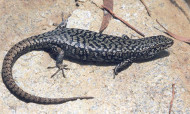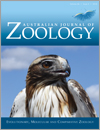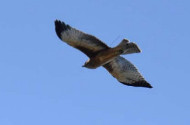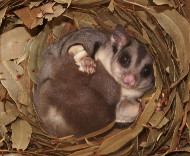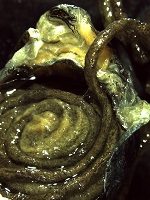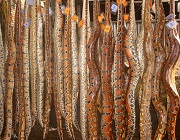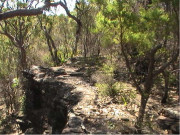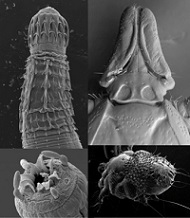Australian Journal of Zoology
Volume 66
Number 4 2018
This study investigated the body temperatures of spotted snow skinks living along an altitudinal gradient over a full activity period of this species. The environmental variation across sites and seasons affected their body temperatures, and they achieved their thermal preference with the exception at high altitude. Thermoregulatory behaviour acts as a potential buffer to overcome changes in environmental conditions.
Photo by Erik Wapstra.
The little eagle (Hieraaetus morphnoides) is listed as Vulnerable in the Australian Capital Territory, but the movements and ranges of birds breeding in the ACT are unknown. An adult male bird was tracked by GPS-satellite transmitter between the ACT and the Northern Territory. This paper gives the first confirmation that little eagles can migrate between southern and northern Australia and conservation of the species needs to be of nation-wide consideration.
Photo by Stuart Rae.
We examined the time budget of 5–6 male and 5–6 female squirrel gliders during 6–8 nights in each of three seasons that were stratified by moon phase. Feeding dominated the time budget, accounting for 78% of observation time, or 85% of time when combined with behaviours associated with foraging.
Photo by R. Goldingay.
Tadpoles constitute an important link in floodplain wetland food webs, though little is known of their diet. While we identified many items in tadpole gut contents, including microcrustaceans and plants, stable isotope analysis suggested biofilm was the most important food item.
Photo by Joanne Ocock.
Indonesian short-tailed pythons are heavily exploited for their skins, but their ecology remains poorly known. We reveal that these superficially similar species differ in many aspects of morphology and ecology, as do specimens of the same species from different geographic locations. These traits may strongly influence the sustainability (and thus management) of offtake of these taxa.
Photo by Daniel Natusch.
The small-eyed snake (Cryptophis nigrescens) coexists with the threatened broad-headed snake (Hoplocephalus bungaroides). Surveys at 64 rock outcrops over a 16-year period revealed the small-eyed snake was not influenced by a disturbance variable known to influence the broad-headed snake. These species occupied outcrops independently of each other.
Photo by Ross Goldingay.
Wildlife parasitology is a highly diverse area of research encompassing disparate scientific disciplines and practitioners investigating highly dissimilar organisms. This review highlights advances made to date and identifies current significant gaps which exist in our understanding. Modern molecular methods are providing major advances in documenting and re-structuring the phylogeny of parasitic groups and facilitating recognition of species complexes in taxa previously defined by traditional morphological methods.
Photo courtesy of Ian Beveridge, Australian Society for Parasitology and Lee Skerratt.
